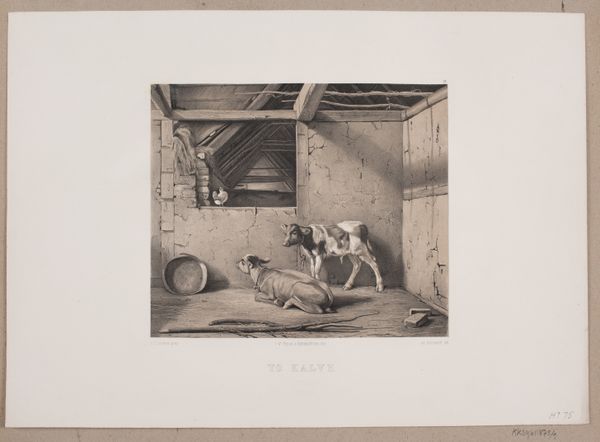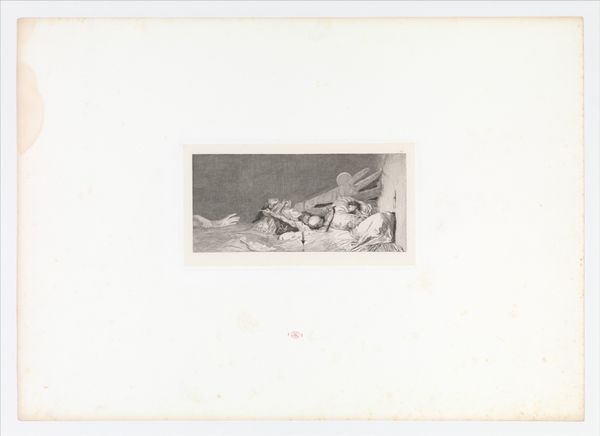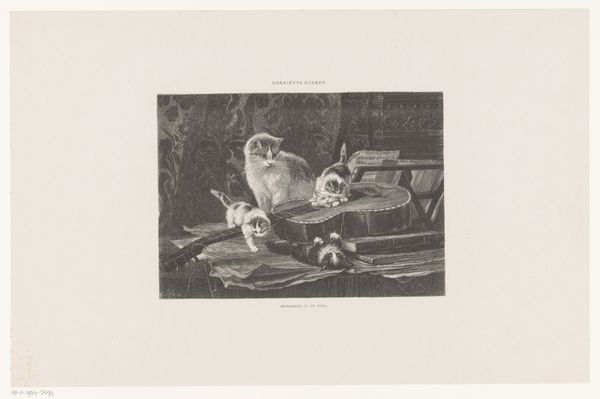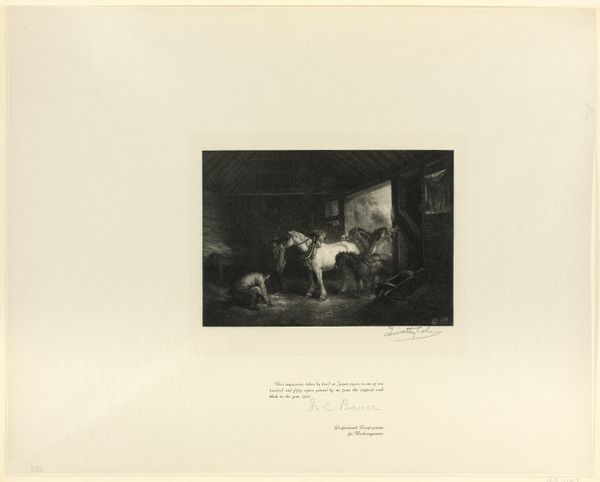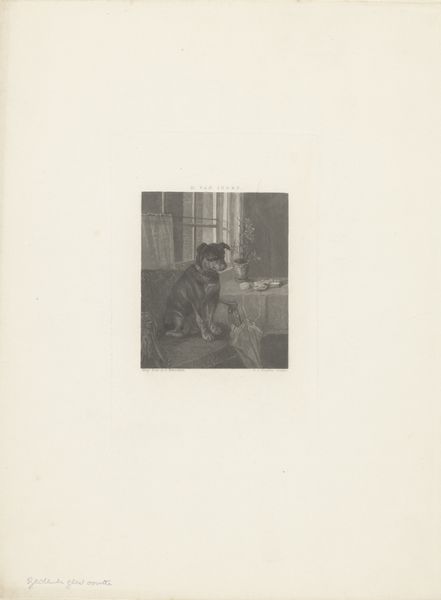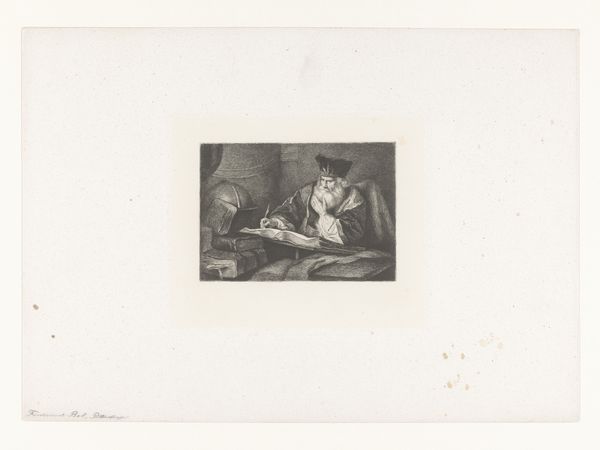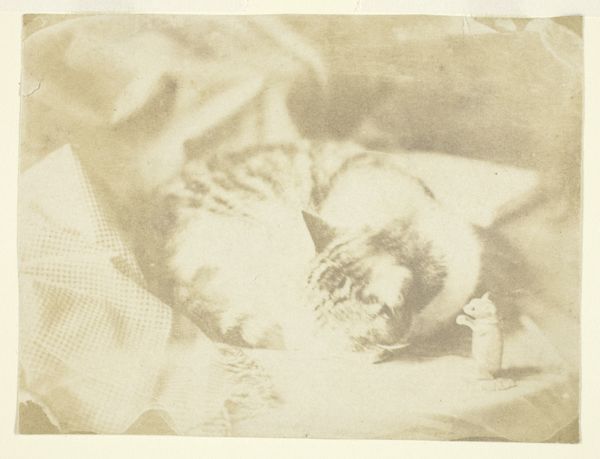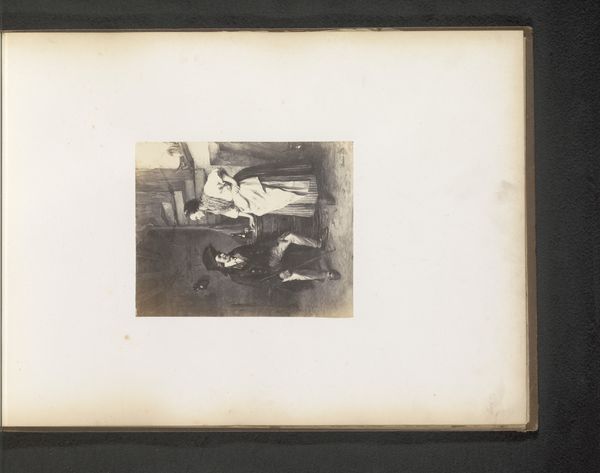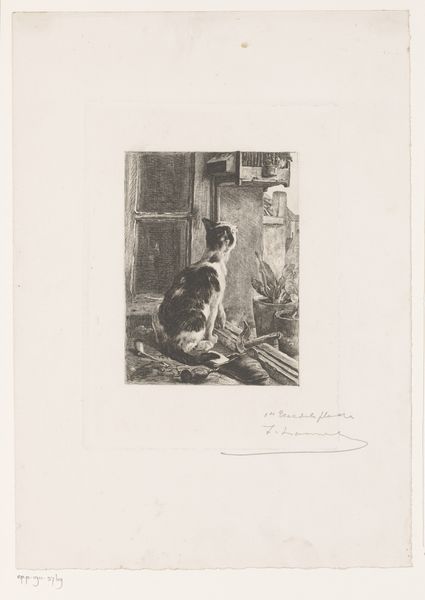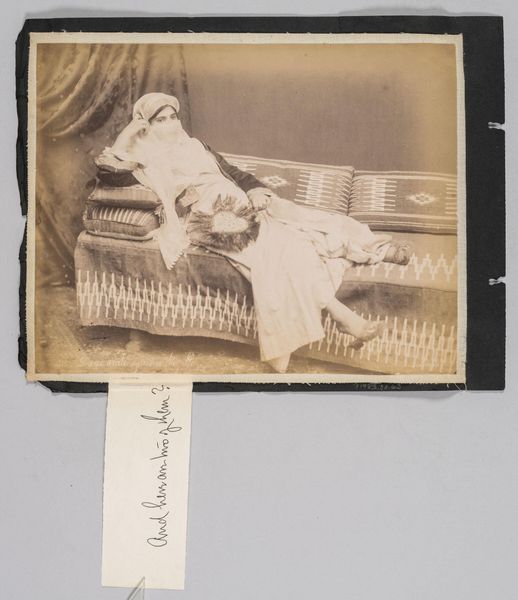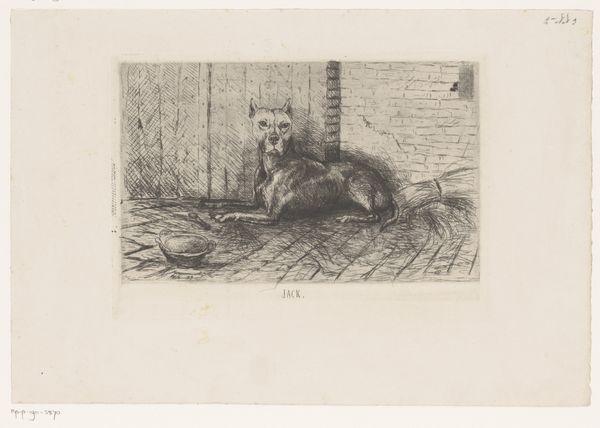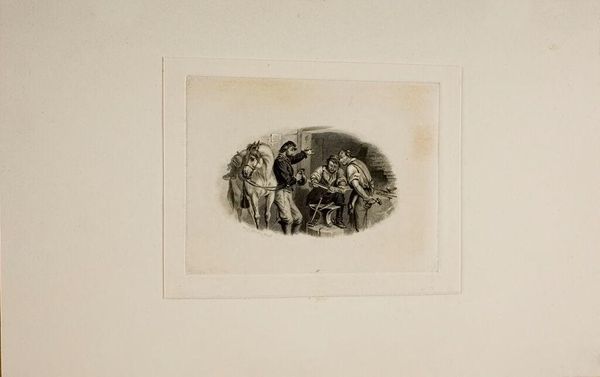
print, etching
#
animal
# print
#
etching
#
genre-painting
#
realism
Dimensions: height 270 mm, width 353 mm
Copyright: Rijks Museum: Open Domain
Curator: Before us we have “Two Young Dogs Fighting over a Slipper” by Anthony Cornelis Cramer, likely created sometime between 1852 and 1862. It’s currently housed here at the Rijksmuseum. Editor: My first impression is the almost unsettling sweetness of the scene. There's a clear sense of playfulness, yet the title hints at something more confrontational. I find it amusing in an uncomfortable sort of way. Curator: I see that discomfort too. The work clearly participates in the Realist movement of the era. Look how it uses the genre painting trope, to portray a seemingly everyday scene. But what might that slipper signify within a Victorian society’s gendered structure, a reference to domestic life or the struggle of possession? Editor: Fascinating thought! And let’s examine how the printmaking process contributes. The etching technique itself—the physical act of incising lines, layering acids to eat away at the metal—suggests an industrial and repetitive production process. This directly translates to mass production, an intriguing contrast to the handmade feel often associated with "high" art. What about the material realities of canine life during this time? Were they becoming further intertwined within middle class home life? Curator: Precisely, thinking through the cultural position of pets helps us interrogate both human affection and the ownership it implies. The work could be read as a reflection of changing relationships of power and affection in the bourgeois home, made possible, ironically, through commodified leisure and domestic display. Editor: And, circling back, that slipper! Its worn texture, beautifully rendered, speaks to consumption and its connection to a domestic life facilitated by increased material access and evolving societal norms around private life. How does the material history intertwine with these two puppies playfulness? Curator: Excellent point. It is the combination of genre and subject matter, mediated through consumer goods. Ultimately the dogs become symbols of the era’s aspirations and tensions. The material, the domestic, and the socio-political intertwine through Cramer's skilled hand. Editor: Agreed. This work invites viewers to grapple with the relationships of human beings to animals through material possession—and the processes through which meaning and art were distributed across society in general.
Comments
No comments
Be the first to comment and join the conversation on the ultimate creative platform.
